Reflections - In Memoriam
Click on a name to scroll down to their reminiscence
RICHARD M. LERNER
I never had the honor of meeting David Layzer in person. Nevertheless, I remain in his debt. His
extraordinary and far-ranging intellect and his spirit of scientific integrity and academic honesty
enhanced my career and changed my field, developmental science, for the better.
In the mid-1970s, I was working to complete what would be my first book, Concepts and
theories of human development. I was struggling to address a reviewer’s comment about the
then uncontested work of Sir Cyril Burt, a world-famous British psychologist who claimed that
his research with identical (monozygotic) twins proved that intelligence, as measured by
intelligence tests and indexed by IQ scores, was largely genetically determined.
Who was I, the reviewer asked, to question the validity of the research of Sir Cyril? Who was I
to question the statistical usefulness of heritability analyses of genetic versus environmental
sources of IQ scores? The reviewer suggested that I did not have the knowledge or stature to
question Sir Cyril’s data analytic abilities.
Then I read an article published in 1974 in Science magazine by a professor of astrophysics at
Harvard University, “Heritability analyses of IQ scores: Science or Numerology.” David Layzer
had both the academic stature and the understanding of mathematics and statistics to challenge
Sir Cyril’s use of them. I used his article to counter the reviewer’s questions and, I guess, to
convince the editors to go ahead and publish my book. First published in 1976, the book has
become one of the most used texts in graduate education in my field; the fourth edition was
published in 2018.
David argued that heritability research in general (and, particularly in relation to IQ), involved
advancing fallacious arguments and misapplying data. To begin with, Burt and others who relied
on his data, declared that IQ is a trait, which in psychology is seen as an attribute that is innate
and not susceptible to environmental influence. Therefore, because IQ was innate, then people
with lower IQs were regarded as being of inferior “genetic stock.”
However, David pointed out that any alleged genetic difference, or “inferiority,” of people with
lower-than-average IQ scores was based on assertions that made no scientific sense, that were
significantly and egregiously flawed in several ways.
“Tests of IQ are precisely analogous to physical readings made with a black box —a device whose internal working is unknown. Because we do not know what an IQ test or a black box is supposed to measure or how it works, we cannot know to what extent measurements carried out on different subjects are comparable or to what extent they are influenced by extraneous factors. Thus, IQ scores contain uncontrollable, systematic errors of unknown magnitude. This helps to explain why different investigators frequently report such widely differing estimates of the same IQ correlation. Systematic discrepancies between measurements of the same quantity are never ignored in the physical and biological sciences, because they signal the presence of unsuspected systematic errors or of defects in the theory underlying the measurements. IQ scores also differ from conventional measurements in that they have no strict quantitative meaning. The IQ is an index of rank order on a standard test, expressed according to a convenient but essentially arbitrary convention. In effect, the intervals of the IQ scale are chosen in such a way as to make the frequency distribution of test scores in a reference population approximately normal, but other methods of defining the scale could claim equal prior justification. These considerations show that IQ scores are not phenotypic measurements in the usual sense”.He concluded that:
“Under prevailing social conditions, no valid inferences can be drawn from IQ data concerning systematic genetic differences among races or socioeconomic groups. Research along present lines directed toward this end—whatever its ethical status—is scientifically worthless”Later in the 1970s, it was demonstrated that Burt’s conclusions were not based on actual data. That is, the data were made up. No actual research was ever conducted. Nevertheless, even with much weaker data, genetic reductionists continued to claim that intelligence was largely inherited. And David continued to critique the claims of what he labeled as “IQ-ists.” Writing in 2000, he asked:
“How have biometricians who analyze IQ scores managed to occupy themselves for so many decades with strictly meaningless questions? The answer—or at least the most polite part of the answer—lies in their failure to formulate their mathematical model correctly” .He concluded that:
“Biological, psychological, and sociological considerations make it seem highly implausible that IQ test scores could have the additive structure biometricians posit. For this reason alone, it seems to me that biometric studies of IQ are scientifically bankrupt”Today, as we enter the third decade of the 21st century, David’s contributions, made over 40 years ago, continue to frame the correct understanding of the nature-nurture controversy in developmental science. And they continue to provide conceptual and methodological tools useful for combatting allegations that race differences are based on the presence of inferior genes. His contributions to developmental science have done more than enrich all of the editions of my book. They modeled intellectual courage, in that he stepped beyond his own area of science to venture into another area and work to correct what he knew were fatal flaws in scholarship that, if uncorrected, could negatively affect human lives. His commitment to truth provided hope that the appropriate use of theory and statistical methodology could serve to correct fallacious arguments about alleged inevitable racial, ethic, and socioeconomic deficits in people. I am personally in debt to his scientific courage and acumen. And so too are millions of young people in our nation and world.
CRAIG HOGAN
Scientists, even nice ones, can be kind of scary, but David was never like that. You felt you
could say anything to him, no matter how stupid, and it would be OK. (Somehow, he managed
to be this way without ever saying anything stupid himself.) That rare and liberating openness
is the main thing about David that has stuck in my memory of him for over four decades now.
For many young people that passed through his world, he offered a unique kind of
unconditional acceptance, like a college-level Mr. Rogers: everyone is OK, everyone is special,
and he really meant that, and it was really true. In a rigorous field that is intimidating even for
insiders, David helped everyone participate, and share the depth and beauty of scientific ideas.
In cosmology, David sought to understand the origin of cosmic structure. He was one of a
handful of individuals who had the wisdom, vision and courage to commit their work to a risky
enterprise that at the beginning was not always regarded as a legitimate scientific inquiry,
but has now, after half a century, brought us to a deep understanding of connectedness
throughout space and time. Throughout his career, he realized that the quiet insight and
confident, deeply-questioning independence of thought of a single individual can sometimes
reach deeper into the nature of things than the accepted “wisdom” of a scientific community.
The main thing I want to say is Thank You, both to David and to Jean, for your kindness and
generosity of spirit, for sharing the love and warmth of your home, for your shining examples
of how to live and love and work and talk and listen, that helped to launch me into adulthood
and indeed, showed me how to live.
Thanks again!
Craig Hogan
ROBERT LAYZER
THE ASTRONOMER by Gerrit Dou
For David
His compass measures two points on the globe,but time is running out in grains of sand.
His candle will not last the night: the last
page of the book of stars will be unread.
Galaxies whirl and rush apart. A low
noise can be heard throughout the universe.
Chaos evolves to sense by mathematics,
and Schrödinger's cat collapses into life.
Robert Layzer 8-20-19
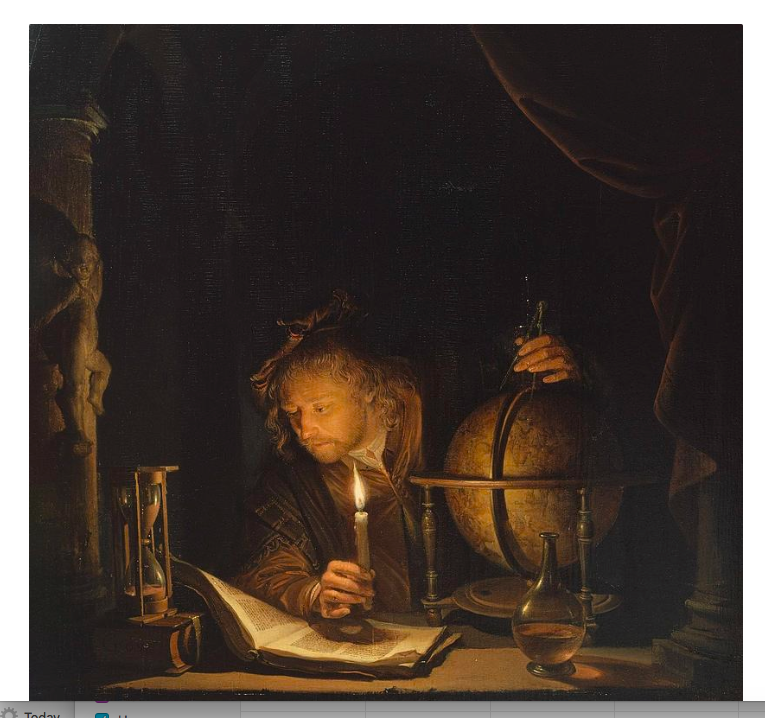
ANTHONY BURKE
Dear Jean,
Thank you very much for your note and news about David. You have my greatest condolence on your loss.
This news really hit me pretty hard. I can't totally get used to the fact that David isn't with us any more. I had sort of expected David to always be there and his absence makes a big hole in the world. He had a very large influence on my life - I once said to David that my father taught me how to speak and David taught me how to count. I remember that in giving a lecture to a class David would develop the mathematics on the blackboard from scratch, showing how each step was thought through and then executed, rather than copying the lecture onto the blackboard from notes written out beforehand as is usually done, and this method really informed my own approach to lecturing. Another most important thing I learned from David was how to get a ball-park estimate of a result from consideration of the most important physics coming into play - the "back-of-the-envelope" calculation - in order to get a feeling for a problem and decide whether a detailed calculation would be useful. This had an enormous influence on my way of thinking - part of how to count. Besides the astronomical explorations, those were very special days at Harvard College Observatory, including the squash and tennis games we had.
I'm extremely pleased to hear that David finished his book on Why We Are Free. Judging from the excerpts that he sent me I think this will be an important contribution not only to the question of free will but also be a unique overview of the different realms of physics. David had a very insightful take on the interplay of these different realms and it's important that it be entered into the library of human knowledge - I'm sure it will be on the top shelf.
Love, Tony
JOHN GOODSON
I came to know David at the end of his life.
I’d known him for years, but the last months brought an intimacy that only a doctor can share
with a patient as death comes.
It started with an act of courtesy, a kindness.
David was with a colleague, trying to sort out the vagaries of a pesky prostate.
When leaning to pick up a scrap of neglected paper on the waiting room floor, he fell.
Falling can begin the begets of life, the dominoes that tumble on each other, a sequence of
events that unravel precious life
David’s back was vulnerable.
Aren’t they all?
The years exact a toll with relentless minor strains, awkward twists, repeated lifts and bends.
But more came to plague the life of this steady soul.
The bladder, the prostate, the nerves, the very tissues that connect and support conspired to
create relentless pain.
David, dear David, patiently participated in all our efforts to find an answer, a cure, a mitigating
treatment, a pathway to relief, even an explanation.
Drugs, tests, therapies one after another.
But we lacked the power, the insight, the capacity to tame David’s pain.
But through this, David continued his work, his lifelong mission to explain the cosmos to any
and all who cared to understand the boundless intrigue.
He would sleep in restless spurts, but the pain would always rip away him away from
restoration.
Then he would work, focusing, searching for the right words to explain the ideas that could not
be suppressed.
But the pain and the fatigue always returned, imposing, intruding, unrelenting.
We worked in tandem, he with writing, me with doctoring
But David’s body was exhausted.
His long and vibrant life, so filled with music, was changed forever.
Life became survival.
David, the Harvard professor, the astrophysicist, the husband and father, the quartet master,
the teacher, the mentor, the writer, the skeptic, the intellect, the synthesizer, was the David I
knew.
In those last weeks and days, at those final moments, I saw the deeper force that powerfully
animated this man.
At our last visit, David reclined at home in the sunlight of late afternoon.
I cheered him to rally.
Gathering all his resources, he tried so hard to show me that he cared about my efforts on his
behalf.
He was reassuring me, working to be a respectful and willing patient, not from some deep
sense of deference but with trust and affection.
He showed me that he cared about me, even as he knew, as only the dying know, that there
was little left.
In a twist of relations, I was in David’s care
Here was the core of this man, his love for others, the engine of this long and productive life.
Even as he faced death, he wanted me to know that he trusted me, trust being a gift of love.
David understood the dispassion of nature, the inexplicable randomness of death.
He was too practical not to know that his physical self was spent.
But for David, living was the counterbalance to dispassionate nature.
Imagination, creativity, irreverence were his tools.
David was not one to pass on the opportunity to add the output of his brilliant mind to the
world he inherited.
So, as life ended, David left his creations for us all as gifts from a fellow traveler, a soul
animated by love and affection.
With these gifts, we survive.
In memory of David LayzerJohn Goodson, MD
March, 2020
MICHELE KAUFMAN
Prof. Layzer was strongly supportive of women in astronomy. In
the 1960s, several women at Harvard did research with him: Holly
Thomis, Cara Joy Hughes, Claire Max, a former professor of Physics
at Vassar (whose name I have forgotten), and me. If a student in
Layzer's research group wrote a paper for publication, Prof.
Layzer did not automatically add his own name as he wanted the
student to get full credit. Here are some examples from my
own experience.
First, a contrast. In my junior year, I took Astronomy 140
from Layzer, but I was assigned another male professor, whom I
shall call "Nameless," as my astronomy dept. advisor. "Nameless"
said to me at our first meeting, "It is a waste of time to
educate you in astronomy since as a woman you will just get
married and quit." To which I replied "What about Cecilia Payne
Gaposchkin," and thought to myself "She has done more important
work than you will ever do." For my senior year, Layzer was my
official advisor. Before the fall semester started, I asked him
which astronomy grad. schools I should apply to. He named the top
six astronomy graduate departments in the U.S. Clearly Layzer did
not have the same view of female students as "Nameless" did.
Shortly thereafter, I learned my mother was terminally ill with
cancer; she died that December. I decided that I needed to go a
graduate school close enough to our home in Rhode Island so that I
could go home weekends to be with family and help my 14-year old
sister. Therefore I applied to only one graduate school: the
Astronomy Dept. at Harvard. When I came back in January, I worried
to Prof. Layzer about my applying to only one graduate school. He
kindly said "You have been taking astronomy courses with our
graduate students and doing as well as they do, so you shouldn't
worry about getting into grad. school."
Layzer hired me as a research assistant for the summer before
I entered grad. school. When I wrote up the results of the project,
he told me to submit the manuscript to the ApJ with my name as
sole author.
The Astronomy Dept. required graduate students to do two research
projects, one observational and one theoretical. I began the latter
in 1964 under Layzer's supervision; he suggested that I compute the
radio and X-ray background to be expected from extragalactic sources.
I decided to calculate the radio to microwave background that would
be produced by a combination of emission from discrete extragalactic
radio sources and intergalactic free-free emission. At that time,
the existence of intergalactic ionized hydrogen was completely
unknown.
After Penzias and Wilson measured the "excess antenna
temperature" at 4.08 GHz, and before their result was widely known,
Arno Penzias visited Harvard and talked to me. I noted that
intergalactic free-free emission could account for the background
they measured, and that their measured value provided an
important constraint on the values of intergalactic electron
temperature and density. Prof. Layzer told me to submit my result to
Nature. He did not want to be listed as co-author because "people
would know this was not his type of research." This Nature paper was
widely cited but after the microwave background was measured at
other frequencies, it became clear that intergalactic free-free
emission was not the explanation for the CMBR.
When I completed my Ph.D. with Layzer on topics related to the
Cold Universe, he helped me get a faculty position in the Physics
Dept. at Brown, where he had a friend. I couldn't have asked for a
more supportive advisor.
DEBORAH JONES MERRITT
As a freshman in fall 1973, I pored over the Harvard course catalogue. There were so many enticing
courses, so many new subjects to explore. But one course drew my eye above all others, a general
education course named “Natural Sciences 90: Space, Time, and Motion.” The course promised a
combination of astrophysics for nonscientists, philosophy, history of science, and more. I signed up and
was enthralled from the first class meeting.
David Layzer was the genius behind that course. He, together with my experiences in the course, had a
profound effect on my development as a student and future academic. I learned how to read scientific
articles and reason through difficult ideas. I learned the excitement of taking ideas from one discipline
and applying them to a different field. I polished my writing skills and delighted in small group
discussions. The lessons of “Nat Sci 90” were like a rocket fuel that propelled me through the rest of my
college years and into my career.
David himself was the essential ingredient of this propellant. His passion for learning, gentle stewardship
of class discussions, and dedication to undergraduates were remarkable. At a time when most Harvard
professors were faces on a large lecture stage, David nurtured undergraduates on their path to learning.
I saw the impact of his efforts even more closely when I had the honor of serving as a teaching assistant
in the course. David did not use his TAs to distance himself from undergraduates; instead, we supported
the vibrancy and wisdom he shared with everyone.
I am grateful that so many classes of Harvard students had the chance to learn from David Layzer, and
sad that no future freshmen will share that same delight. But David’s inspiration remains forever with all
of us who knew him.
Deborah Jones Merritt, Harvard ‘77
JIM ELLISON
As a lonely college student with a passion for string quartets, it was my good fortune to meet David and to be swept into the extended Layzer family, where along with so many others I have felt welcomed and included for nearly 5 decades. My visits to their home, which started in 1972, were usually for an evening of string quartets, a gathering that would begin with one of Jean’s fabulous meals and a far-ranging dinner conversation followed by David’s invitation into the music room, “We are not here for fun!” We visited and revisited the masterpieces of the chamber music repertoire and other pieces of less renown, sometimes with more zeal than success, always with camaradie and appreciation followed by dessert and more conversation. These evenings continued, gradually less frequently, until David’s declining health no longer permitted. I think everyone concerned remembers them with pleasure.
In the wake of David’s death, Jean allowed me to find homes for David’s collection of chamber music scores and parts. I had assumed my knowledge of his accumulated trove, neatly organized into folders and boxes, to be complete after so many visits to the music shelves in his living room, but as I shared the individual items with others of his musical circle, there were some discoveries and reminders of his remarkable character.
Alongside the standard repertoire, there were many obscure works, older and more modern, some in faded photocopies, all attesting to David’s breadth of curiosity and interest. His solo books, some of which must have been 70 or more years old, made clear his life-long devotion to mastering the violin through disciplined and continuous study. As a young man, clearly he must have worked through some of the most challenging classics from the concerto repertoire as well as the flashy showpieces of Wieniawski and Sarasate, carefully annotated with fingering and bowing markings. His Bach partitas were particularly marked and worn. A copy of the Ysaye solo sonatas and 4 editions of the Paganini caprices pointed toward a musical fearlessness that would have been in keeping with his willingness to tackle the most complex scientific, social and philosophical problems.
Like our bodies, printed music ages over the decades. The bindings loosen and break, the pages fade and lose their suppleness. They no longer bend or fold, they merely crack. Some of David’s music, like its owner, was laid to rest. David’s rapid aging, toward the end, was incredibly sad to watch, though he attempted to ease the pain of those who cared for him with his patience, grace, and gratitude for Jean’s unflagging ministrations. He had been a man of physical and intellectual strength and vigor and that is how I will remember him. It was a great privilege to know him and now to share loving memories with so many others in whose lives he played an unforgettable role.
Jim Ellison
MICHAEL OPPENHEIMER
Like a lot of other people, I was strongly affected by David across numerous dimensions. I probably learned more in my first couple of years teaching Nat Sci 90 with David beginning in 1972 (during my postdoc with Alex) than I’ve ever learned about any concepts across any set of subjects over such a brief period in my entire career of research and teaching. David had put together an amazing reading list and syllabus, like nothing I had encountered. It’s hard to believe that a course could do justice to such a broad sweep of disciplines, let alone find a common thread tying them together. I’ve tried to propagate that approach in the courses I’ve put together since coming to Princeton, including at the graduate level - David was pioneering the multidisciplinary approach that is now fundamental to framing an education in the environmental sciences, combining natural and social sciences, quantitative and qualitative methods. Just dropping into David’s office in the late afternoon to sit and chat about most anything, whether cosmology or evolution or IQ tests was a breath of fresh air - something Harvard in those days sorely needed but never fully appreciated. Somehow David managed to deal in rarefied material without seeming pretentious, possibly because his aim seemed to be to make complex ideas accessible rather than to get everyone to agree with him. I found him to be a good listener, not a pontificator, even though he knew a hell of a lot more about most of the ideas we exchanged than I did.
My experience teaching with David over an eight-year span was an important influence on my subsequent career. Not only did I learn a philosophy of teaching but I also learned that I loved the work of teaching. The experience also made clear that focusing on only one subject was not the career I wanted - a key reason I left academia in 1981. I had other things to learn and to practice that I couldn’t learn there. I never really took seriously the idea of coming back to academia but life turns in strange directions and the Princeton that offered me the chance to combine environmentalism and interdisciplinary research with my affinity for teaching is a very different place than the Harvard/CFA I left. I know from friends there and a few visits that Harvard, too, has changed.
Michael Oppenheimer
RAY HIVELY
In the late summer of 1966 I left my hometown of Muskogee, Oklahoma and traveled for the first time out ot the state
and east of the Mississippi to embrace an exciting but uncertain future as a graduate student in the Harvard Physics
Department. Life in Cambridge and two years of coursework in physics at Harvard were eye-opening and
horizon-expanding experiences for me. I think I frequently saw more in 20 minutes in Harvard Square than I had
seen in 20 years in Oklahoma! At the end of my formal coursework in physics my future was still uncertain as I had
not formed a strong connection to the research of a professor in the Physics Department. I was certain though that
my primary intellectual interest and passion resided in an attempt to understand physical reality on the largest
scale through the study of cosmology.
After learning that Professor Layzer was the only Harvard professor working in cosmology at the time, I made
a very nervous and anxious trek to Garden Street and the Harvard Astronomy Department. Without any appointment
or prior notice, I went to Professor Layzer's office and knocked on his door and quickly introduced myself as a physics
student seeking a thesis advisor. That first meeting with David was a major turning point in my professional and
personal life. If that meeting had not been supportive and encouraging, I likely would have left graduate school and
done something else entirely while always regretting that I didn't pursue my primary dream.
After a brief discussion of my hopes, background, and interests, David offered me not only support and encouragement
but also the opportunity to work with him on a research project associated with his concept of a cold big bang. His enthusiastic
support made me believe that I had finally found a place and viable opportunity at Harvard. For the next three years
I worked at developing a cold universe cosmology featuring an expanding substratum of a solid metallic hydrogen-helium
alloy which shattered into planet-sized fragments. Gravitational instability then operated on the density fluctuations associated
with these fragments to produce stars, galaxies, and interstellar dust which absorbed starlight and emitted the microwave background.
These ideas seemed attractive at the time because they did not invoke speculation about the unknown physics of the ultra-high temperatures
associated with hot big bang models.
In proposing and developing the idea of a cold big bang David showed one of his most prominent characteristics: a courageous
enthusiasm for pursuing important and promising ideas even if they were outside the mainstream. While most cosmologists
of the period jumped on the hot big bang model bandwagon very quickly, it took over 20 years for observations to find
evidence which made the cold big bang very improbable. I think David's cold universe scenario was a beautiful idea, and
it is a pity that it didn't ultimately prove to be viable.
In 1972 I worked as a research assistant for David and we co-authored a paper on the "Origin of the Microwave Background".
During this period of working with David I was very much impressed by his kindness, humanity, and his wide spectrum
of interests outside cosmology and astrophysics. He was very much interested in developmental science and social justice
(especially related to the heritability of IQ), in music, and in athletics such as tennis and swimming. To my eyes David exhibited
a vibrant intellectual breadth together with an elegance of speech, manner, and sophistication which became a major role model
for my own personal development. He and Jean invited me to their home several times for dinner and social occasions where I
encountered levels of discourse, kindness, and gentleness which served as inspirational examples for me. I did play tennis with
David several times. While tennis was my best sport and while I was somewhat competitive against David and 20 years younger,
I never beat him! When I was offered a tenure track position at Earlham College in 1972, the hiring committee told me that my
success was based largely on the weight and enthusiasm of Professor Layzer's recommendation.
I last saw David in 1994 when I returned to Harvard one summer as a NASA research fellow. David as always greeted me with
interest in my career, treated me to lunch, and invited me, my wife, and two daughters to spend a delightful weekend with
Jean and him at their cottage. David's unflagging kindness toward and interest in his students provided a powerful inspiration
for my career as a teaching professor. He showed me how a relatively modest investment in supporting a student can have a
very dramatic impact on their later values, confidence, and professional success. I hope some of my students have profited from
what I learned from David. When thanking Jean for her hospitality that summer, she replied in characteristic Layzer fashion that
the best way I could show my gratitude was to "pay it forward" by showing similar hospitality to someone else who might
need it.
Thanks to David and Jean Layzer for making such a positive difference in my life. Neither of you will be forgotten.
DANIEL LEE
For over 40 years I had the pleasure and honor of having David as a friend and fellow chamber musician. Since my medical school years I looked forward to countless evenings of exploring the chamber music repertoire with David and friends. After a sumptuous dinner, lovingly prepared by Jean, we would sit down and tackle whatever music came to mind. Undaunted, David would suggest sightreading some of the most difficult string quartets (Oh, how he loved playing late Beethoven!). His musical sensitivity and sensibility was admirable. His love for the music and appreciation for the fellowship of playing with others always allowed him to overlook our sightreading bloopers. After a typically exhausting but satisfying session we would then settle down to a spirited and stimulating discussion of all sorts of topics.
David was obviously a great intellect, but even more so, he was a gentle and loving soul with a mischievous streak. Not only would he be concerned about the welfare of those around him, but also he would value each person's opinion and feelings. His smile and laughter are permanently etched in my memory. Even though I miss him greatly, I take comfort that he is no longer suffering in pain and that he never had to be socially distanced. I will always treasure our years together.
ROBERT LAYZER 2
In a Plague Year
For David
I paid a visit to my brother, who is dead.He likes to take walks
faster than I can keep up, gasping for breath.
But wasn't that always the case?
Wrapped in a cosmological dream,
he talks and I listen, voice a lot like mine
but six feet apart as prescribed by law.
But here's the question: When we meet
again in Heaven (which he never believed in)
will I still walk six feet behind
or will I finally catch up?
4-21-20
Chad Johnson
September 26, 2020
Professor David Layzer was unique. I met him on my first day as an undergraduate at Harvard College in 1985. Not only was he my teacher, I became a section leader for years thereafter in assisting to teach his undergraduate courses. We stayed in touch from time to time in the years since and I only recently found that he had passed away. He was a gentle, persistent, kind intellectual who was curious about everything. He added greatly to my life and not many weeks go by when I do not think about his impact on my life through his unusual course curriculum and our discussions. I wish the best for Jean and his family and wish I had known earlier of David's passing. I will be forever grateful for being in a distant but real orbit around Professor Layzer.
Lawrence Bernstein
StudentOctober 3, 2019 David was the rarest of individuals whose deep and far-ranging intellect never overshadowed his keen sense of humor and passionate belief in social justice. I was privileged to know the man, whose soul shall forever be blessed. My heart goes out to Jean and family.
Louise Pajak
September 22, 2019
Dearest David,
I will miss your erudition, elegance and wit. My only wish is that I could have kept up.
Matt Fichtenbaum
August 25, 2019
In the early 1980's I acquired a violin that had been owned by a gentleman named David Layzer, who had transitioned to playing viola. It seems likely it was the same person. I still have the instrument, which gives me pleasure to play, and I feel that its warmth and responsiveness reflects the care and affection its previous owner gave to it. Thank you, Dr. Layzer, for its gentle spirit.
References
David's Wikipedia page
David's German Wikipedia page (English translation).
David's Information Philosopher web page
David DeVorkin's 2007 oral interview for the American Institute of Physics
David's PhilPeople page
David's Books on Amazon
Click on a picture to open it
full size in a new tab
full size in a new tab


1942, Senior Year
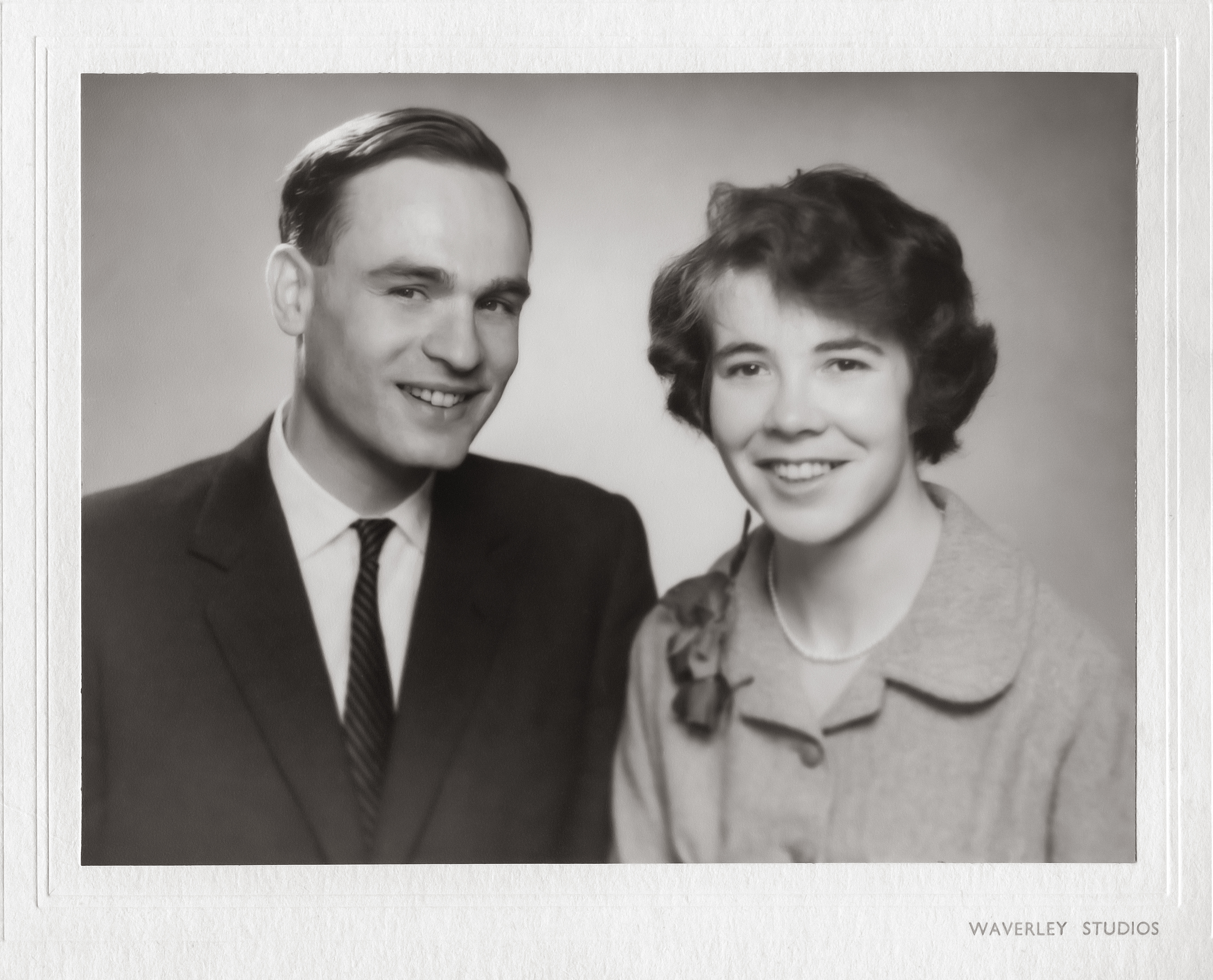
1959
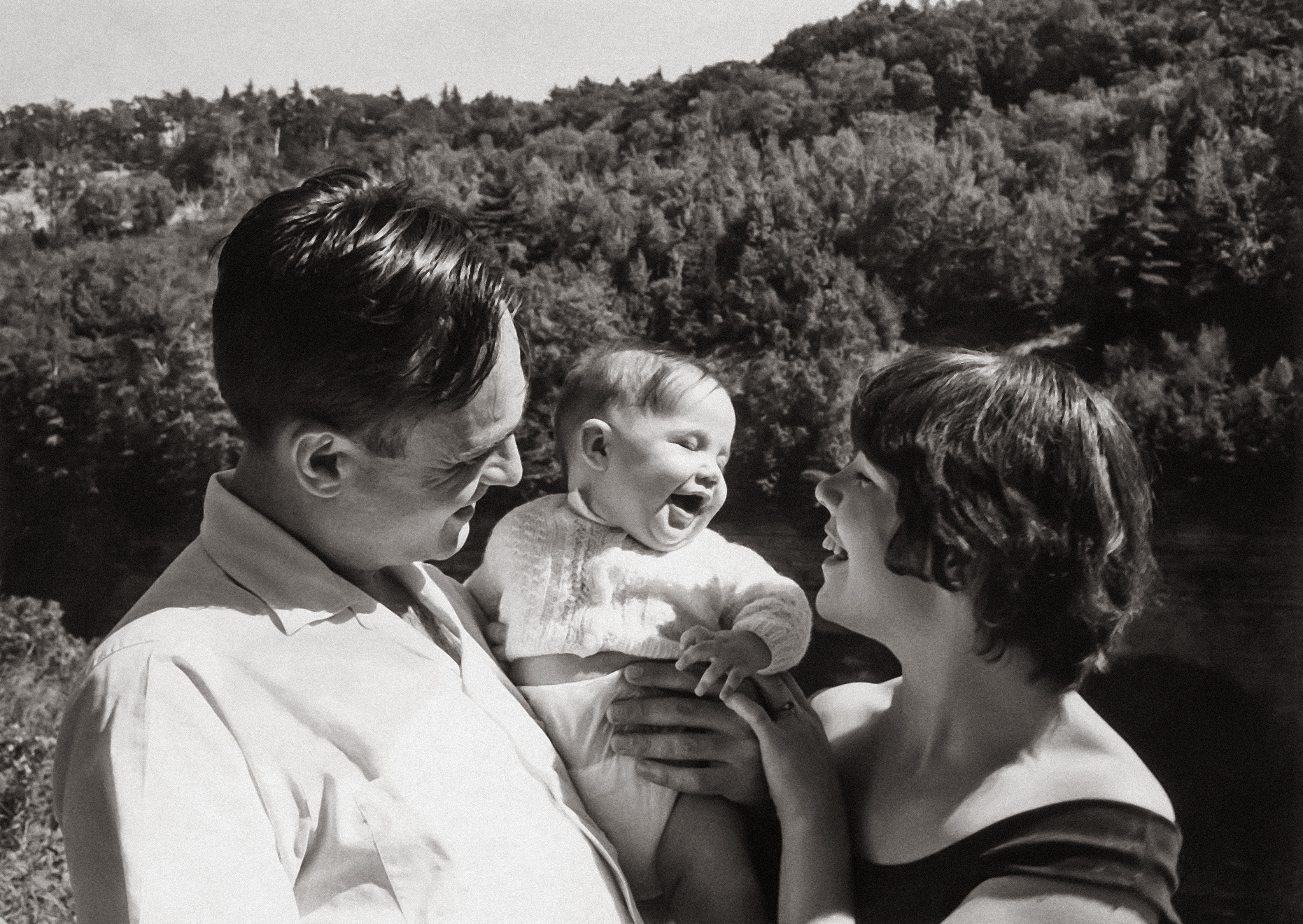
1960
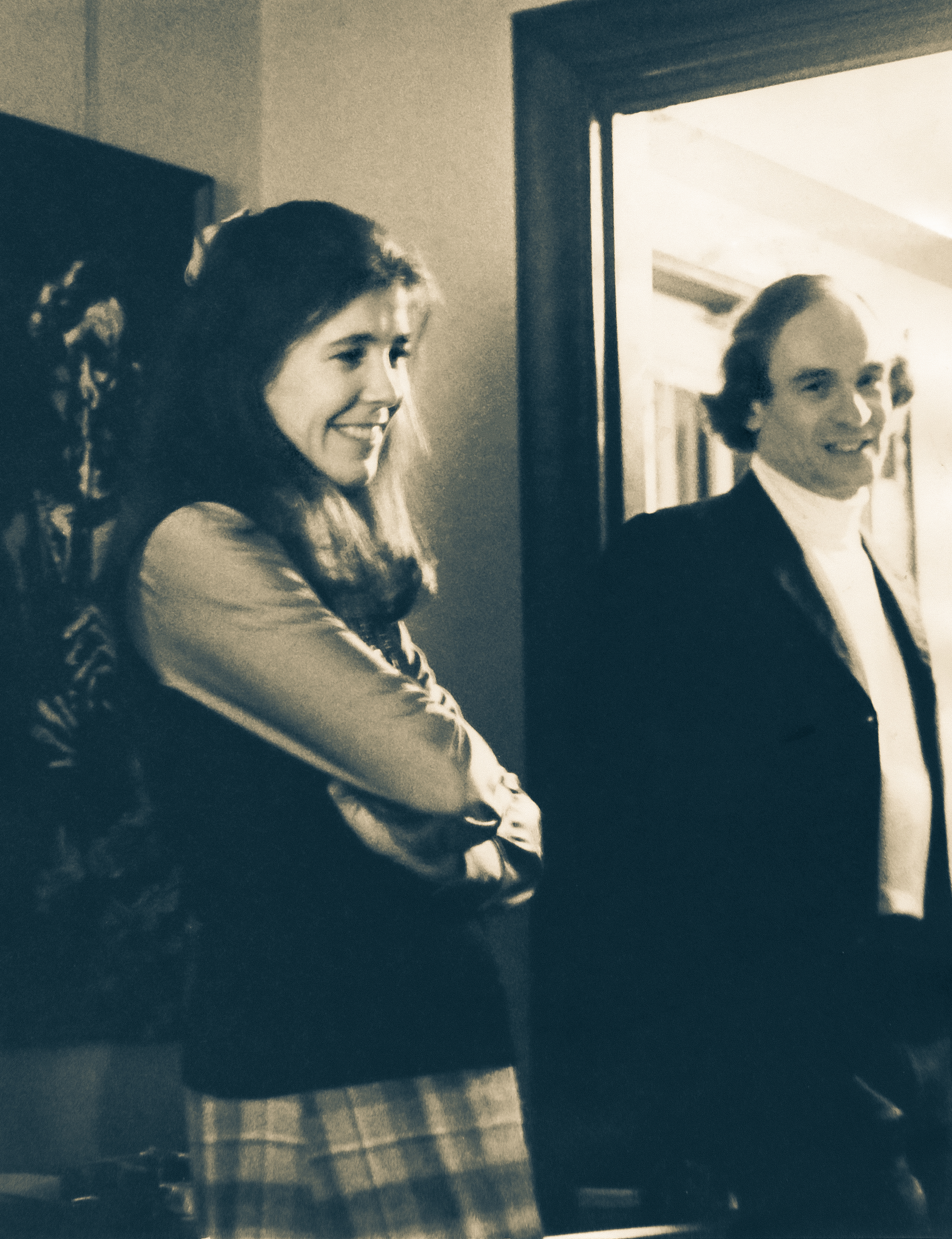
1970

1980
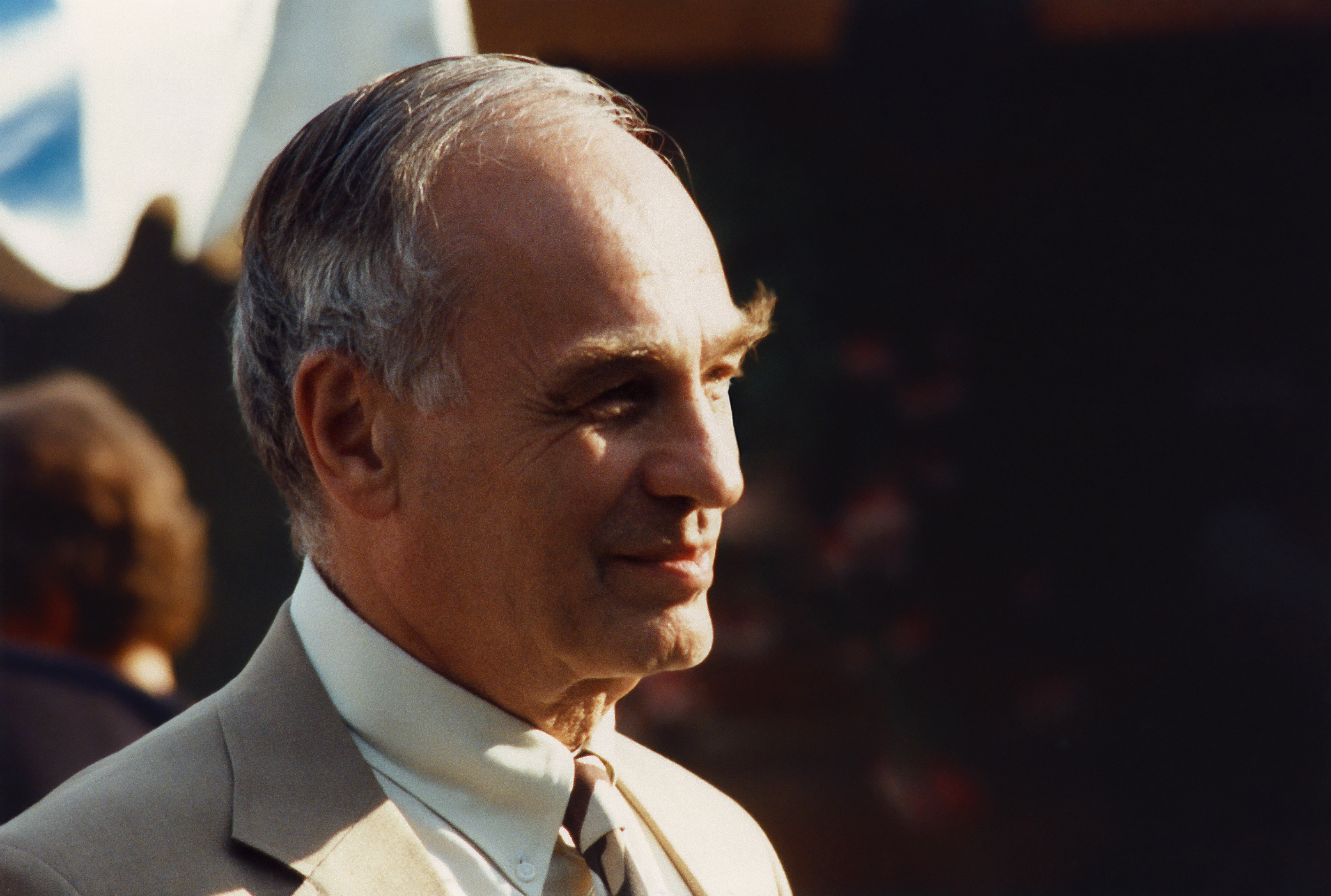
1990
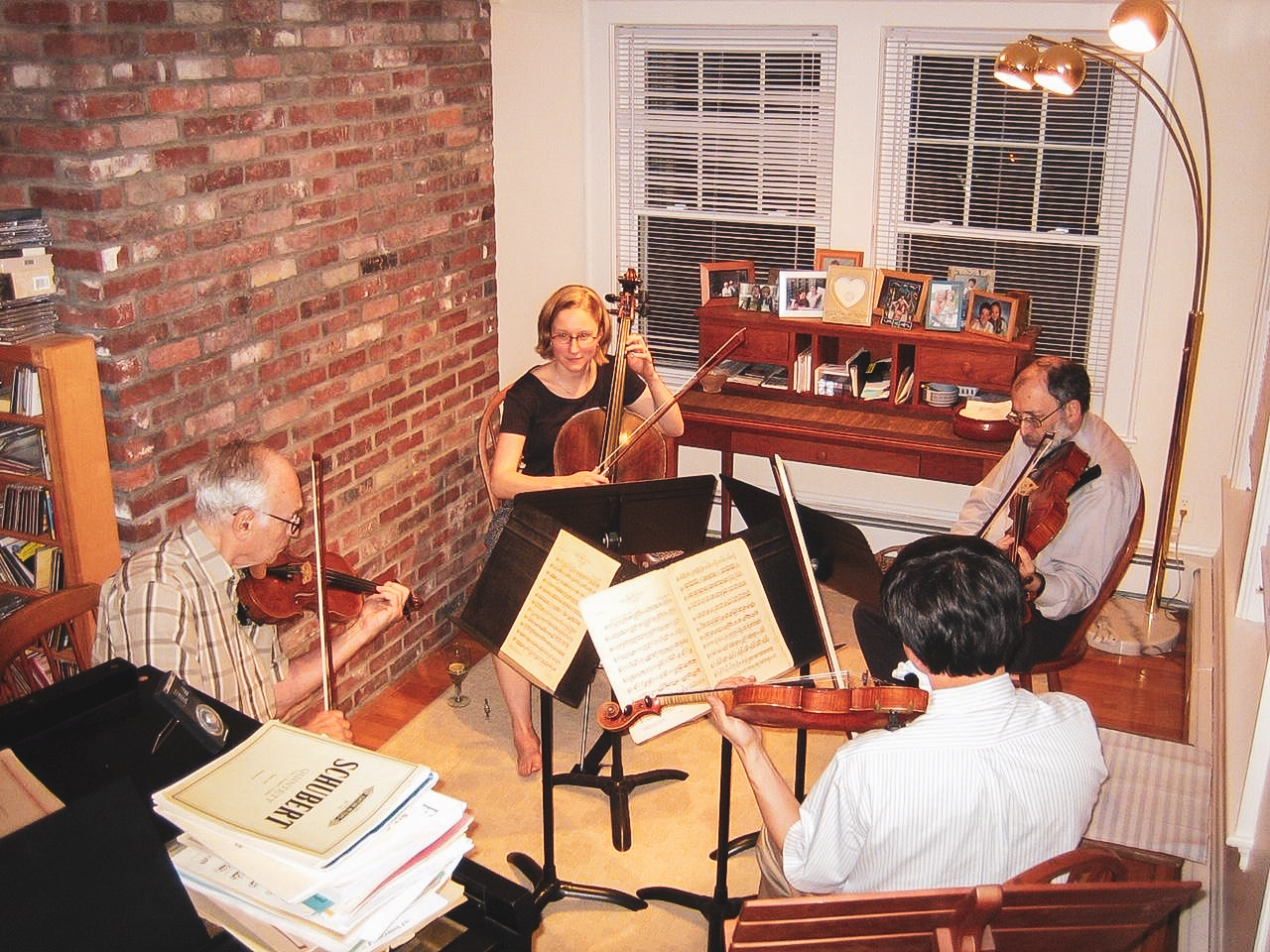
One of Many Layzer String Quartets:
David, Sarah Co, Jim Ellison, and Dan Lee
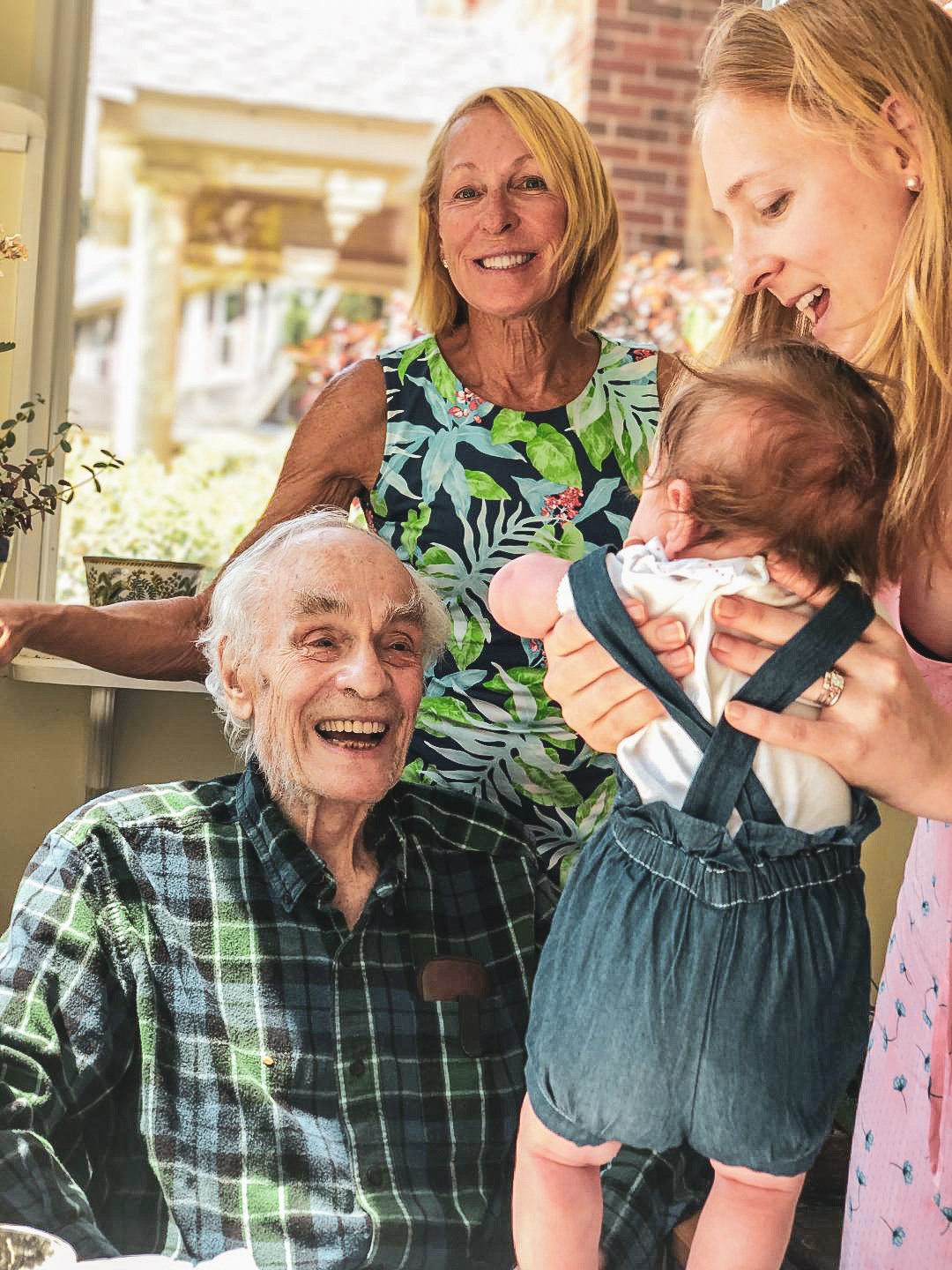
Four Generations:
daughter Emily Sherwood,
her daughter Pamela Sherwood Karlan,
and Pamela's daughter Helene
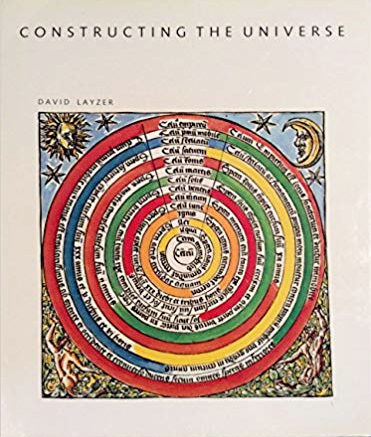 Constructing the Universe traces the
Constructing the Universe traces the history of theories about the nature of the universe, looks at the contributions of scientists from Copernicus to Einstein, and summarizes current theories of cosmic evolution. Scientific American Library, 1984 |
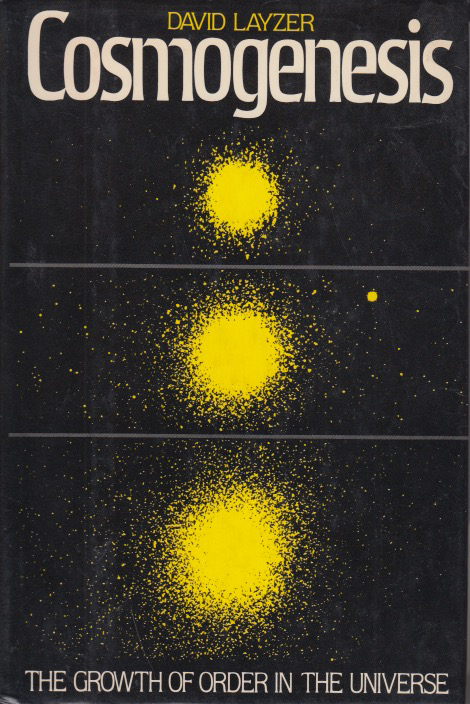 Cosmogenesis looks at the growth of chemical, biological, and mental order in the universe and discusses the origin of the universe and cosmic evolution.
Contains David's theory of the
Cosmogenesis looks at the growth of chemical, biological, and mental order in the universe and discusses the origin of the universe and cosmic evolution.
Contains David's theory of the growth of order in the universe. Oxford University Press, 1990 |
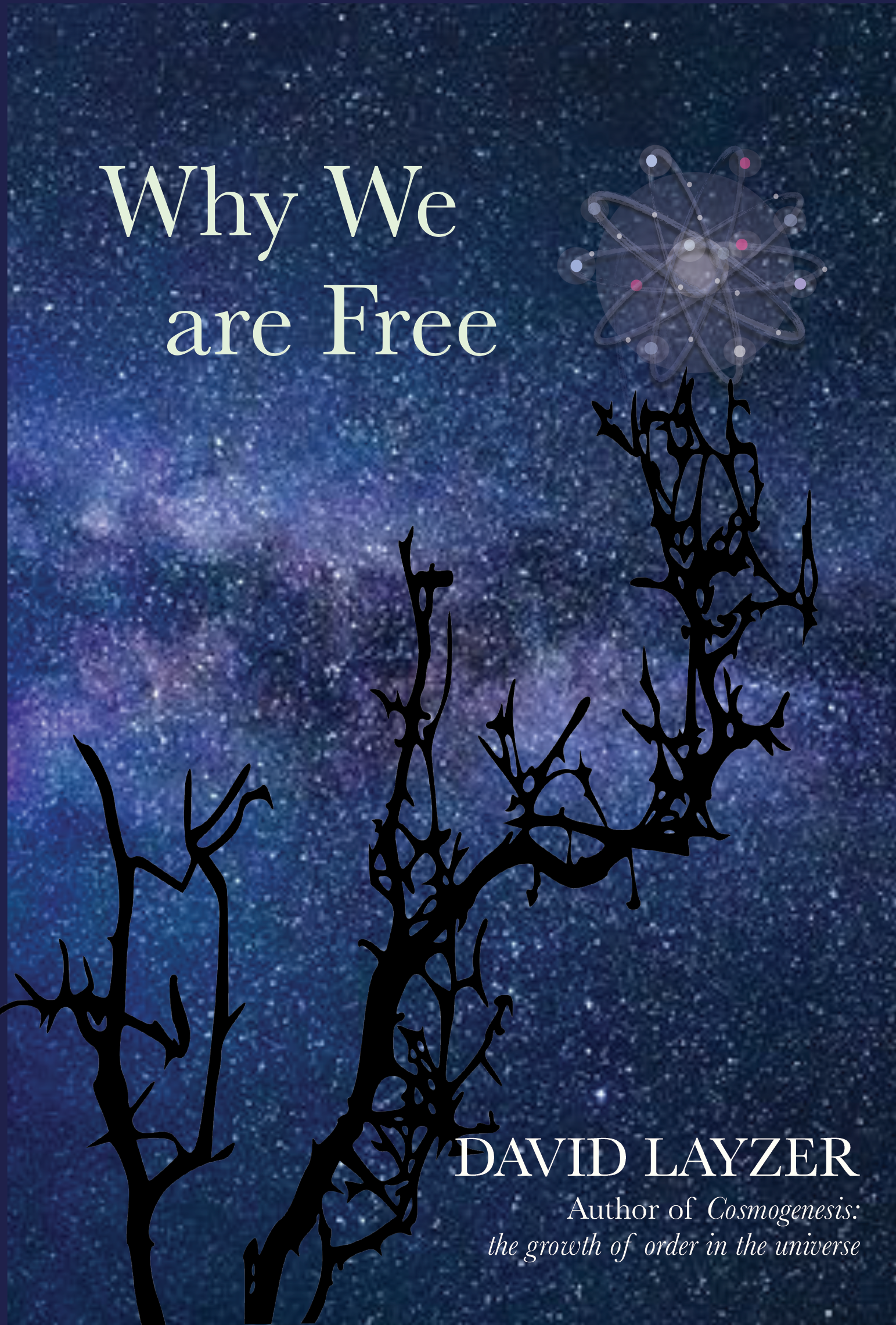 In Why We are Free, David argues that human thoughts, decisions, and actions are creative, adding order and information to the universe, much as cosmic evolution and biological evolution have done. Biological evolution is a two-step creative process, with chance in the first step and natural selection determining the outcome. David's libertarian free will also comes in two steps, the first is the random generation of possibilities, the second is the deliberative decision and reflective choice that selects one possibility, making it actual, an act of self-determination.
Contains David's theory of
In Why We are Free, David argues that human thoughts, decisions, and actions are creative, adding order and information to the universe, much as cosmic evolution and biological evolution have done. Biological evolution is a two-step creative process, with chance in the first step and natural selection determining the outcome. David's libertarian free will also comes in two steps, the first is the random generation of possibilities, the second is the deliberative decision and reflective choice that selects one possibility, making it actual, an act of self-determination.
Contains David's theory ofConsciousness, Free Will and Creativity in A Unified Scientific Worldview. I-Phi Press, 2021 |